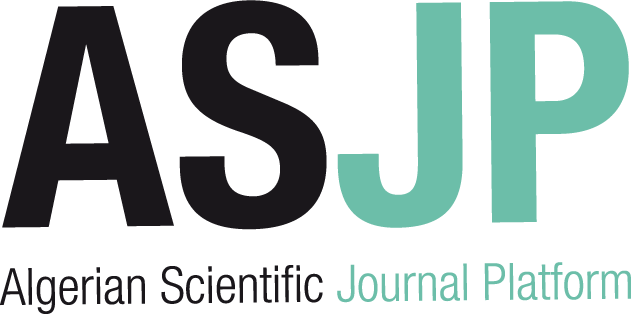[article]
| Titre : |
Adsorption behaviors and mechanisms of methyl orange on heat-treated palygorskite clays |
| Type de document : |
texte imprimé |
| Auteurs : |
Hao Chen, Auteur ; Aiguo Zhong, Auteur ; Junyong Wu, Auteur |
| Année de publication : |
2013 |
| Article en page(s) : |
pp. 14026–14036 |
| Note générale : |
Industrial chemistry |
| Langues : |
Anglais (eng) |
| Mots-clés : |
Clay mineral |
| Résumé : |
Understanding completely the interaction of clay mineral and anionic dye is very important for the applications of clay minerals. In this paper, the adsorption behaviors of heat-treated palygorskite clays for methyl orange (MO) from an aqueous medium were studied using equilibrium batch and theoretic calculation techniques. The crystal structure and surface appearance of the heat-treated samples were studied using Fourier transform infrared (FTIR) and scanning electron microscopy (SEM). The adsorption results reveal that a higher calcining temperature helps in improving removal performance of palygorskite clay for methyl orange. The isothermal adsorption experiments show that there is almost no adsorption at low dye concentrations but a sudden linear increase occurs when the dye concentration exceeds to a certain value. A lower change point is observed for 700 °C treated sample compared with that of the natural sample. The leaching of exchangeable Mg2+ ions located in palygorskite should be a key factor affecting the adsorption capacity. Both the experimental and theoretical studies suggest that the adsorption of MO onto heat-treated palygorskite clay is controlled by the two mechanisms: for samples treated at lower temperatures (400 °C), electrostatic interaction between the dye–Mg2+ complexes and negatively charged surface of heat-treated palygorskite clay becomes dominant. In addition, the latter becomes stronger with the increasing the calcination temperature, which can be ascribed to the formation of a higher ratio of complexes and stronger negatively charged surface of the adsorbent caused by leaching of more metal ions. This work provides a deep insight into the interaction of heat-treated palygorskite clay and anionic dye, which paves the way for their practical applications in anionic dye adsorption. |
| ISSN : |
0888-5885 |
| En ligne : |
http://pubs.acs.org/doi/abs/10.1021/ie300702j |
in Industrial & engineering chemistry research > Vol. 51 N° 43 (Octobre 2012) . - pp. 14026–14036
[article] Adsorption behaviors and mechanisms of methyl orange on heat-treated palygorskite clays [texte imprimé] / Hao Chen, Auteur ; Aiguo Zhong, Auteur ; Junyong Wu, Auteur . - 2013 . - pp. 14026–14036. Industrial chemistry Langues : Anglais ( eng) in Industrial & engineering chemistry research > Vol. 51 N° 43 (Octobre 2012) . - pp. 14026–14036
| Mots-clés : |
Clay mineral |
| Résumé : |
Understanding completely the interaction of clay mineral and anionic dye is very important for the applications of clay minerals. In this paper, the adsorption behaviors of heat-treated palygorskite clays for methyl orange (MO) from an aqueous medium were studied using equilibrium batch and theoretic calculation techniques. The crystal structure and surface appearance of the heat-treated samples were studied using Fourier transform infrared (FTIR) and scanning electron microscopy (SEM). The adsorption results reveal that a higher calcining temperature helps in improving removal performance of palygorskite clay for methyl orange. The isothermal adsorption experiments show that there is almost no adsorption at low dye concentrations but a sudden linear increase occurs when the dye concentration exceeds to a certain value. A lower change point is observed for 700 °C treated sample compared with that of the natural sample. The leaching of exchangeable Mg2+ ions located in palygorskite should be a key factor affecting the adsorption capacity. Both the experimental and theoretical studies suggest that the adsorption of MO onto heat-treated palygorskite clay is controlled by the two mechanisms: for samples treated at lower temperatures (400 °C), electrostatic interaction between the dye–Mg2+ complexes and negatively charged surface of heat-treated palygorskite clay becomes dominant. In addition, the latter becomes stronger with the increasing the calcination temperature, which can be ascribed to the formation of a higher ratio of complexes and stronger negatively charged surface of the adsorbent caused by leaching of more metal ions. This work provides a deep insight into the interaction of heat-treated palygorskite clay and anionic dye, which paves the way for their practical applications in anionic dye adsorption. |
| ISSN : |
0888-5885 |
| En ligne : |
http://pubs.acs.org/doi/abs/10.1021/ie300702j |
|


 Ajouter le résultat dans votre panier Faire une suggestion Affiner la recherche
Ajouter le résultat dans votre panier Faire une suggestion Affiner la rechercheAdsorption behaviors and mechanisms of methyl orange on heat-treated palygorskite clays / Hao Chen in Industrial & engineering chemistry research, Vol. 51 N° 43 (Octobre 2012)











